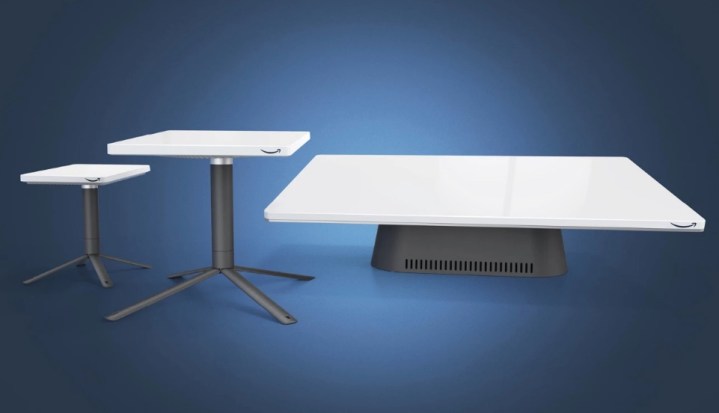Amazon has shown off the hardware that will be used by the first customers of its Project Kuiper internet-from-space service.
Like SpaceX’s Starlink, Project Kuiper will use a constellation of small satellites to power a broadband service for customers around the world, though its primary focus will be on communities unserved or underserved by current internet technologies.

And also like Starlink, customers will need a terminal to receive the broadband signal.
Amazon said it’s been working on the design of its terminals to create something that’s “smaller, more affordable, and more capable” than those offered by the likes of SpaceX’s Starlink service, though it has yet to offer pricing details.
Unveiled on Tuesday, Amazon’s “standard” customer terminal is 11 inches across and 1 inch thick, and capable of delivering speeds of up to 400 megabits per second (Mbps).
The second one (below) has a 7-inch-square footprint and will be Project Kuiper’s smallest and most affordable customer terminal. However, at 100 Mbps, speeds will be slower than the standard terminal.

Amazon is pitching this smaller design at “customers who need an even lower-cost model, as well as government and enterprise customers pursuing applications like ground mobility and internet of things (IoT).”
Finally, Amazon will offer a high-bandwidth design for what it describes as “demanding needs,” and lists enterprise, government, and telecommunications applications as likely uses. This dish measures 19 inches by 30 inches and will deliver speeds of up to 1 gigabit per second (Gbps).
The Project Kuiper terminals will be powered by an Amazon-designed baseband chip, developed under the name “Prometheus.”
“Prometheus combines the processing power of a 5G modem chip found in modern smartphones, the capability of a cellular base station to handle traffic from thousands of customers at once, and the ability of a microwave backhaul antenna to support powerful point-to-point connections,” the company said.
To push Project Kuiper toward implementation, Amazon is aiming to deploy its first two prototype satellites on the maiden flight of United Launch Alliance’s Vulcan Centaur rocket, which is currently set for May.
If the satellites perform as expected, mass deployments — similar to how SpaceX has been deploying thousands of Starlink satellites — will begin taking place in early 2024, with the Project Kuiper service coming online for the first customers later that year.
Editors' Recommendations
- Amazon to build $120M facility at Kennedy for internet-from-space project
- SpaceX restricts Ukraine from ‘weaponizing’ its Starlink internet
- SpaceX nails first Starlink launch since its internet service went global
- SpaceX launches more Starlink satellites and reveals latest customer count
- SpaceX apologizes to customers for Starlink shipping delays


